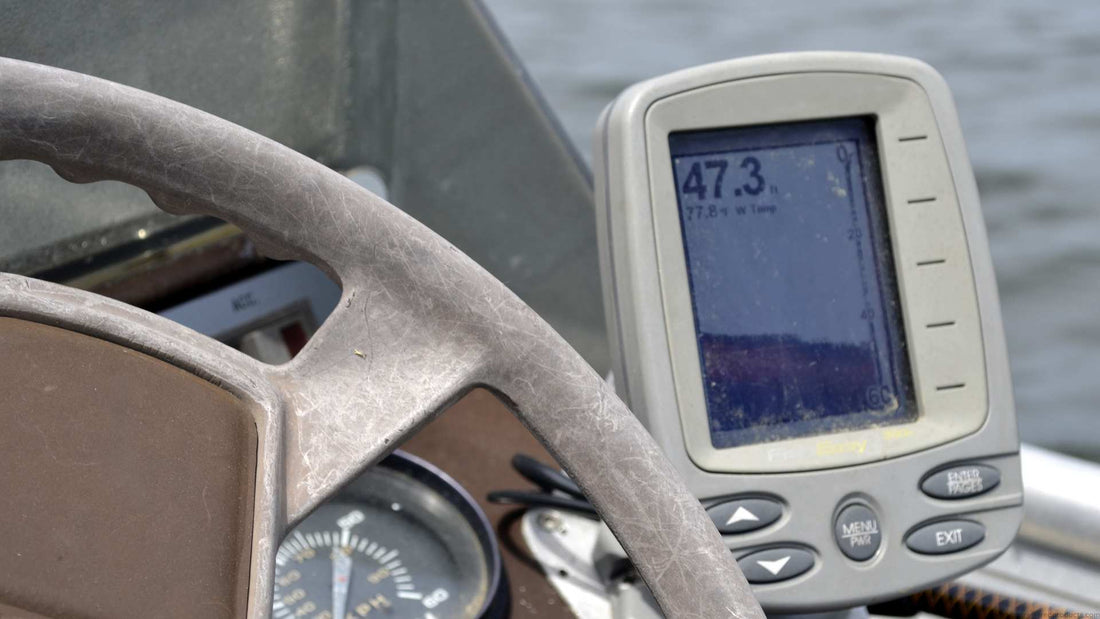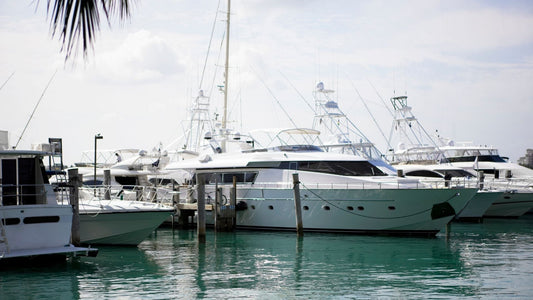
What is a Transducer on a Boat? Everything Boaters Need to Know
Nicholas HeislerShare
If you've spent any time on the water, you've likely heard the term "transducer" thrown around, especially when discussing fish finders or depth sounders. But what exactly is a transducer on a boat, and why is it such an essential piece of equipment for modern boaters? Whether you're an experienced mariner or a casual weekend fisherman, understanding what a transducer is and how it works can significantly enhance your boating experience.
In this guide, we'll dive into everything you need to know about transducers, including how they work, the different types available, and how to choose the best one for your boat. By the end, you'll not only know what a transducer is but also how to make the most of it on the water.
What is a Transducer on a Boat?
A transducer is a critical component of marine electronics, responsible for converting electrical signals into sound waves and vice versa. It's the technology that powers sonar systems, including fish finders and depth sounders, by sending sound waves into the water and interpreting the echoes that bounce back. These echoes provide valuable information about what lies beneath the surface, such as water depth, underwater structures, and the presence of fish.
Think of the transducer as the "eyes" of your sonar system, helping you navigate safely, avoid hazards, and locate the best fishing spots. Without it, your fish finder or depth sounder would be little more than a display screen with no useful data.
How Does a Transducer Work?
Transducers operate using sonar (Sound Navigation and Ranging) technology. Here's a simplified breakdown of how it works:
- Emitting Sound Waves: The transducer sends out sound waves (often referred to as "pings") into the water. These waves travel until they hit an object, such as the seabed, a fish, or underwater debris.
- Receiving Echoes: When the sound waves hit an object, they bounce back to the transducer as echoes.
- Converting Signals: The transducer converts these returning echoes into electrical signals, which are then sent to your sonar display.
- Displaying Data: The sonar system interprets these signals and displays them as images or data points on your screen, giving you a clear picture of what lies below.
The quality and accuracy of this process depend heavily on the type and quality of your transducer. Factors like frequency, beam angle, and ping rate all play a role in determining how much detail you can see and how far you can detect underwater.
Types of Transducers for Boats
Choosing the right transducer starts with understanding the different types available. Each type has its strengths and weaknesses, depending on your boating needs and the kind of vessel you own.
1. Thru-Hull Transducers
Installed through the hull of the boat, these transducers provide excellent performance and are ideal for larger vessels.
Pros:
- Superior performance at high speeds.
- Minimal interference from turbulence or bubbles.
Cons:
- Requires a hole to be drilled in the hull, which can be intimidating for some boat owners.
2. In-Hull Transducers
Mounted inside the hull, these transducers transmit sound waves directly through the boat's hull into the water.
Pros:
- Easy installation without drilling holes.
- Protected from damage since they are inside the boat.
Cons:
- Reduced sensitivity, as sound waves must travel through the hull.
- Not suitable for all hull materials (e.g., not effective on metal hulls).
3. Transom-Mount Transducers
Attached to the transom (rear) of the boat, these are the most common type for recreational boaters.
Pros:
- Easy to install.
- Cost-effective and versatile.
Cons:
- Prone to turbulence and interference at higher speeds.
- May require periodic adjustments to maintain alignment.
Benefits of Using a Transducer
If you're still on the fence about investing in a transducer, consider these key benefits:
1. Improved Fishing Success
A transducer helps you locate fish more effectively by showing their positions and depths. This is invaluable for anglers looking to maximize their catch.
2. Enhanced Navigation Safety
Knowing the depth and underwater terrain can prevent accidents, such as running aground or damaging your boat on submerged objects.
3. Better Exploration
With detailed images of the underwater environment, you can discover hidden structures, shipwrecks, or reefs, making your boating adventures even more exciting.
Choosing the Right Transducer for Your Boat
Selecting the perfect transducer depends on several factors:
1. Boat Type and Size
Smaller boats often benefit from transom-mount transducers due to their simplicity and ease of installation. Larger vessels might require thru-hull or in-hull transducers for better performance.
2. Sonar System Compatibility
Ensure your transducer is compatible with your fish finder or depth sounder. Many manufacturers design their products to work seamlessly together.
3. Water Type
Saltwater environments often require more powerful transducers due to higher levels of salinity and greater depths compared to freshwater.
4. Frequency and Beam Angle
- Frequency: Higher frequencies (e.g., 200 kHz) provide better detail but are limited to shallower depths. Lower frequencies (e.g., 50 kHz) penetrate deeper but with less detail.
- Beam Angle: Wider beams cover more area, while narrower beams offer more precision.
Installation Tips and Maintenance
Proper installation and regular maintenance are key to getting the most out of your transducer. Here are some tips to keep in mind:
Installation Tips
- Positioning Matters: Install the transducer in an area with minimal turbulence and air bubbles for optimal performance.
- Follow Instructions: Always refer to the manufacturer's guidelines to ensure correct installation.
- Use the Right Tools: Make sure you have the proper tools and sealants to prevent leaks or damage.
Maintenance Tips
- Clean Regularly: Remove algae, barnacles, or debris that can interfere with signal transmission.
- Check Connections: Periodically inspect the wiring and connections for wear or corrosion.
- Update Software: If your sonar system has software updates, ensure you're running the latest version for the best performance.
Troubleshooting Common Transducer Issues
Even the best transducers can encounter problems. Here are some common issues and how to resolve them:
- Poor Readings: Check for debris or damage on the transducer surface. Ensure it's installed correctly and at the right angle.
- No Signal: Verify that all connections are secure and that the sonar system is powered on.
- Interference: Look for sources of electrical interference, such as other electronics on the boat.
If problems persist, consult the manufacturer's troubleshooting guide or seek professional assistance.
A transducer is an invaluable tool for any boater, providing critical information that enhances safety, navigation, and fishing success. By understanding how transducers work and choosing the right type for your boat, you can unlock a world of underwater insights and take your boating experience to the next level.
Whether you're outfitting a new vessel or upgrading your current setup, investing in a quality transducer is a decision you won't regret. So, take the time to assess your needs, explore your options, and get ready to see the underwater world like never before.
When it comes to keeping your boat clean, look to Captains Preferred Products' boat cleaning brushes. Find everything you need to keep your vessel squeaky clean all season long—always at the best prices.




